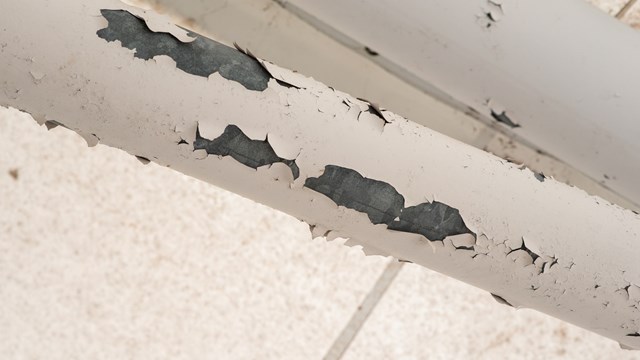
The ads fill the television airwaves each day. Dozens of lawyers encouraging injured parties to sue and collect their claims. It's there on the street, too; every time someone slips or falls in front of a building, there's that look of panic on a property owner's face. When a pipe bursts or wiring goes bad, the first instinct may no longer be to fix the problem, but rather to wonder whose policy will cover the repairs.
The world is a litigious place, and we all need protection. Luckily, for co-op and condo owners as well as for boards, there is a wide range of insurance available to protect from the potentially damaging effects of accidents, incidents and lawsuits. "People can sue for anything - and they do," says Joe Ross of Century Coverage Corp., in Valley Stream, New York. Without the proper coverage, a building and its residents can suffer significant financial strain, wreaking havoc with budgets and operating costs for years after the incident that triggered it is remedied.
Buying insurance is a lot like dressing for bad weather: layers can make all the difference. From terrorism coverage to flood damage, there is a wide range of insurance available for both board and resident. Usually, the building's master policy will cover physical damage for shared areas of the building - basically, the outer four walls of your unit and common areas, like the lobby and laundry room - as well as liability. Individual unit owners or shareholders are responsible for insuring every other aspect of their apartment.
Homeowners can and should purchase their own liability insurance to cover any potential problems that might arise on their premises or in another unit because of a problem occurring in their own apartment - like flooding due to a bathtub left running, or some other form of negligence.
Unit owners who worry about the level of insurance their own buildings carry also might consider purchasing "unit assessment" coverage, which will cover the owner's portion of any assessment charges for losses involving common areas of the building. For example, if a building's $100,000 marble lobby is ruined by a flood, and the building's insurance policy only covers $70,000, the residents likely will be assessed the remaining $30,000, divided evenly among them. If there are 30 residents, they will each be held responsible for $1,000, which would then be covered by their assessment insurance.
For the most part, the question of liability falls to the building to handle. There are three basic types of liability insurance available to co-ops and condos: general liability, umbrella coverage, and directors and officers/employee fidelity. General liability covers the basics; if someone is hurt in the building as a result of a fire caused by negligent maintenance, or for example if bricks fall from the building's façade and injure passersby on the street. The general policy also will cover property damage, like water damage from a pipe that accidentally bursts, or other misfortunes caused by poor maintenance. This basic type of coverage usually provides around $1 million-worth of protection.
The amount of coverage needed in each building is often determined by the building's size and location. Most insurers recommend $100 to $200 worth of coverage per square foot in a new building. Policies may be higher in newer, larger buildings for the simple reason that risk may be higher - it may be harder to bring a resident to safety from an 80-story building during a fire than from a three-story brownstone.
Most boards feel the need to secure additional amounts of coverage, just to be on the safe side. That additional coverage is known as an umbrella policy. An umbrella policy can add anywhere from $10 million to $40 million in extra coverage, the kind of protection that might come in handy on an extremely rainy day. Ross, however, doesn't believe that excessive coverage is always necessary. "It's always safer to have the higher limits, but if it's going to break your budget, you can simply go with the basic."
Along with other types of liability coverage, all buildings - regardless of size - should also carry directors and officers, or "D&O" coverage for board members and associates of the board.
"Co-ops and condos must have this," Ross says. This type of coverage comes into play mostly with personal grievances, where a unit owner or shareholder feels that an act by the board has harmed them in some way. Perhaps they feel they were wrongly kept from purchasing a co-op in the building, or perhaps they feel they lost money on a sale because of board action (or inaction). Whatever the reason, D&O coverage provides personal protection for all board members, saving them from having to pay any damages awarded to a plaintiff out-of-pocket.
The coverage usually clocks in at around $1 million to $2 million as well, although the amount of coverage necessary can fluctuate. There's "no good answer" for how much coverage is enough, says Scott Haywood of Swett and Crawford, a Manhattan-based insurer. "A lot of times, it's the purse strings that will decide how much coverage a building can carry."
Hand in hand with D&O coverage, there are other policies that affect building employees and staff. According to Haywood, any co-op and condo with a staff - again, no matter what the size - should carry employment practices insurance as well as employee fidelity coverage. "Employment practices covers three basic areas: discrimination, wrongful termination, and harassment," he says. This will protect the board and building in the event of harassment between employees, or if an employee feels he or she has been mistreated by management and decides to sue. Haywood also recommends getting third-party coverage, which will protect against any wrongdoing by an employee against a resident, vendor or others not directly part of the building staff.
Ross also believes that employee fidelity coverage can add to a building's overall safety in terms of liability protection. This policy can keep the building and the corporation safe should an employee or member of the board be found guilty of wrongdoing or mismanagement. To handle this correctly, the board always should come to its insurer before facing the individual in question. "Don't ever confront anyone on this," Ross says. "You must first advise the insurance company. They'll then send an investigative unit in to check on what's happening and get the evidence they need to protect the building from harm."
Outside of these three major areas - basic liability, umbrella coverage, and D&O/employee fidelity - boards also should consider carrying environmental liability protection and risk transference. Environmental liability protects the building in case of damages related to mold, asbestos, lead paint, or oil leaks. Traditional policies usually don't cover these aspects of the building, and additional coverage is often needed. "Environmental liability insurance can be terribly costly," says Haywood, "so unless you have a good inkling that there could be trouble, it might not be worth it." Getting an inspection done by a professional architect or engineer can help your board assess the risks of mold infiltration or the presence of asbestos and give them a good idea of whether or not this coverage might be necessary for your building.
Risk transference protection safeguards a building from liability in the event that anything should happen either to an outside contractor working on the site, or to someone else because of the outside contractor. "The idea is "˜don't get caught holding the bag.' Do not let any contractor work [for] you without having a certificate of insurance in place naming the building in its policy," says Ross, adding, "The preference is always to avoid carrying risk."
Working with contractors who do not offer this protection has the potential to cause enormous problems for your building. If a worker is injured on the job, or a resident or even someone simply passing by on the street is injured as a result of the building's construction project, the building can be held responsible for millions in damages - even if the fault lies with the contractor.
Each liability case is unique. The question, Ross says, is never "Is the building responsible? No, the building may not be. Can they still be sued? Yes. Whether the person or building is liable or not is for the court to decide." That's why having the proper insurance policy in place - no matter what the contingency - is vital.
If a resident's building has proper coverage, does that mean the resident does, too? Not necessarily. As stated earlier, your building's policies will only cover the exterior walls of your apartment - and sometimes less, depending on the fine print. All co-op and condo owners should have their own insurance policies - in fact, a prospective owner cannot get a mortgage without one.
When all is said and done, getting the right amount of coverage, whether for individuals, boards or the buildings, is a guessing game. The only thing to be done is to consult the experts and determine how many bases can be covered. To do this every year or on a regular basis is vital as well. In the end, Ross says, "A building is a building is a building - you cover it and that's the best you can do."






Leave a Comment